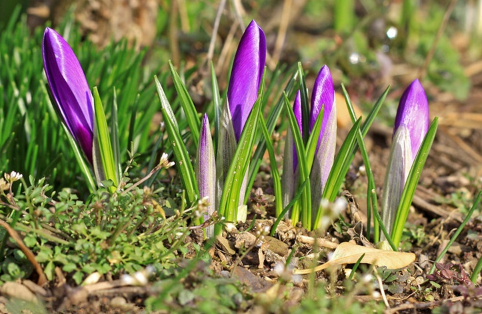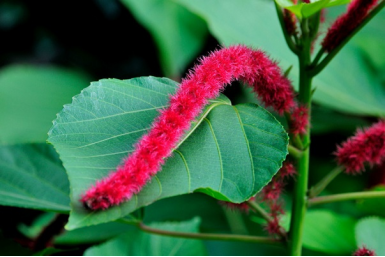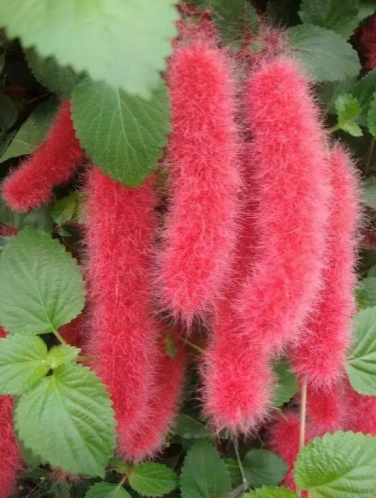Propagation method of saffron
Bulblet reproduction
1. Saffron even in winter and spring, usually in August to September, the earlier the more conducive to seedling growth.

two。 After blooming in spring, pick the residual flowers so as not to consume nutrients, chase the fertilizer solution dominated by phosphorus and potassium twice, protect the aboveground parts in summer and take out the corms to dry and store them.
3. Seed bulbs with bulbs can be divided in autumn and can be broken and planted in a pot.
Sowing and reproduction
Saffron is not easy to seed, need artificial pollination to obtain seeds, can be bought in the florist, generally sow the seeds in the pot in spring and autumn, control the gap, can be properly watered and fertilized, it usually takes three or four years for the grass to bloom.
The value and efficacy of saffron is extremely high, it is said that the price is more expensive, so if you buy it, you must distinguish between true and false, so as not to be deceived.
The efficacy and function of saffron Propagation methods of saffron
Saffron, originated in Greece, Asia minor and Persia, was introduced into Xizang through India and then into mainland China by Xizang, so it is called saffron. Today, I'm going to share with you the efficacy and function of saffron and the knowledge of saffron reproduction.
The efficacy and function of saffron
The efficacy of saffron
Saffron has the functions of dredging meridians and activating collaterals, dredging channels and removing silt, dispersing silt and opening knot, reducing swelling and pain, cooling blood and detoxification, worrying and depressed knot. Long-term persistence in taking it can make people happy and improve the immunity of the human body in an all-round way.
Saffron is famous for promoting blood circulation and nourishing blood, and has unique magical effects. it is widely used by Chinese and foreign medical circles to prevent and treat cerebral thrombosis. diseases such as vasculitis, myocardial infarction, blood deficiency, irregular menstruation, postpartum congestion, systemic pain, fall injury, neurasthenia, palpitation and madness.
The function of saffron
Saffron is not only a widely used and effective medicine, but also its beautiful flowers and unique fragrance, so it is a good material for decorating flower beds and rock gardens. Saffron can also be potted or water-raised for indoor viewing, because the plant shape of saffron is short and hardy, so it can be used as indoor decoration flowers and plants in cold weather.
Propagation methods of saffron:
Saffron can be propagated by the method of dividing balls and sowing, but mainly by dividing balls. The pot should choose the spring flower species with bulb weight of about 20 grams in October, and the flowerpots with an inner diameter of 15 centimeters can plant 5 to 6 balls in each pot. After planting, put it outside for maintenance. It takes root after about two weeks and moves to a place with sufficient indoor light and fresh and moist air. New Year's Day can blossom before and after. The residual flowers should be picked immediately after flowering to avoid nutrient consumption, and compound fertilizer solution dominated by phosphorus and potassium should be applied once or twice to promote bulb growth and sturdiness. Saffron can also be water-raised and ornamental, in the same way as daffodils.
How to grow saffron? Culture methods and matters needing attention of potted saffron
Saffron, also known as saffron, saffron, etc., is a perennial herb of the family Iridaceae. Saffron has a variety of colors, elegant and beautiful flowers, with a special fragrance, is a very good ornamental flowers, often potted indoors. So, how to grow saffron? The cultivation methods and matters needing attention of potted saffron are introduced as follows.
Picture: potted saffron
I. Culture methods of potted saffron
1. Planting: prepare the basin soil in advance and choose fertile and loose soil rich in humus. To choose a seed ball, you must choose a strong ball that is large and full and free of mildew spots. In autumn, the bulbs will be planted in flowerpots, one plant per pot in principle, but according to the size of plants and flowerpots, 4-6 plants can be planted in one pot and 5-8 cm of soil can be covered after planting. Within a week after planting, place the flowerpot in a cool and ventilated place and move it to a brightly lit place for maintenance for a week.
two。 Watering: saffron is usually planted in autumn, its growing season is winter and spring, the climate is cold and dry, and it needs proper watering. Seedlings emerge about 20 days after planting, and water is poured once before emergence to facilitate seedling emergence. Pour antifreeze water before winter to increase the temperature of the soil. Water is watered once in mid-April to reduce the harm of dry and hot wind. Pay attention when watering, do not pour ice water when the temperature is low, the temperature of the water is the same as the room temperature, lest the basin soil freezes and affects the plant growth.
Picture: potted saffron
3. Fertilization: before planting, a sufficient amount of base fertilizer should be added to the basin soil, such as cake fertilizer, stable fertilizer, burning soil, plant ash, chicken and duck manure, etc., as well as some superphosphate. After planting and rooting, the thin liquid fertilizer with balanced nitrogen and phosphorus can be applied every 10 days. Fertilizer must not be too thick, so as not to cause excessive growth of leaves and affect the growth of flower buds. After saffron blossoms in October, the balanced available fertilizer of nitrogen, phosphorus and potassium should be applied once or twice to facilitate the growth and development of the corm, so that the corm can store enough nutrients for more flowering and good flowering in the coming year.
4. Bulb storage: from late April to early May, the aboveground branches and leaves of saffron gradually turn yellow, and the bulbs can be dug out of the basin for collection. After digging out, the seed bulbs are classified, and the rotten and diseased bulbs are dealt with in time, or removed, or thrown away. Put the saffron bulb in a gauze bag and store it in a light, cool and ventilated place to keep the room dry. It can be replanted in autumn.
Picture: potted saffron
II. Matters needing attention in saffron culture
1. Selection of varieties: saffron in winter and spring, flower friends can choose different varieties according to their needs when planting. It is suggested that the spring flowering varieties should be selected, the spring environment is relatively better, and the bulbs are stored in time after flowering, and the flowering time is longer.
two。 The size of the basin: the planting basin should choose a mud basin with a diameter of 15-20 cm, or a plastic basin with good ventilation. 4-6 big balls were planted in each pot and planted in September-October. When you can also use a small basin, 3-5 cm black plastic basin, a basin a ball.
[editor's conclusion] Saffron is very beautiful and is a good product for indoor viewing and courtyard decoration. The above introduces the cultivation methods and matters needing attention of potted saffron. Let's raise a pot quickly.
- Prev

How to raise dogtail red?
1. Light and temperature. Dog tail red is not cold-resistant, requires plenty of light, likes to grow in a warm environment, and the suitable temperature is between 20 and 30 degrees. Because it is not cold-resistant, we must move indoors in winter to keep the temperature above 15 degrees, otherwise it will be frozen, and the leaves will turn yellow and fall. 2. Watering and fertilizing
- Next

Breeding and cultivation method of dogtail red
1. Reproductive methods. The propagation of Gouweihong is usually carried out by cutting method. In April, when the temperature is suitable, the new branches of the strong plants are selected and cut into 10 to 15 cm long cuttings. Each cutting retains two leaves, and then inserted into the substrate made of river sand. After cutting, water should be poured thoroughly.
Related
- Fuxing push coffee new agricultural production and marketing class: lack of small-scale processing plants
- Jujube rice field leisure farm deep ploughing Yilan for five years to create a space for organic food and play
- Nongyu Farm-A trial of organic papaya for brave women with advanced technology
- Four points for attention in the prevention and control of diseases and insect pests of edible fungi
- How to add nutrient solution to Edible Fungi
- Is there any good way to control edible fungus mites?
- Open Inoculation Technology of Edible Fungi
- Is there any clever way to use fertilizer for edible fungus in winter?
- What agents are used to kill the pathogens of edible fungi in the mushroom shed?
- Rapid drying of Edible Fungi

